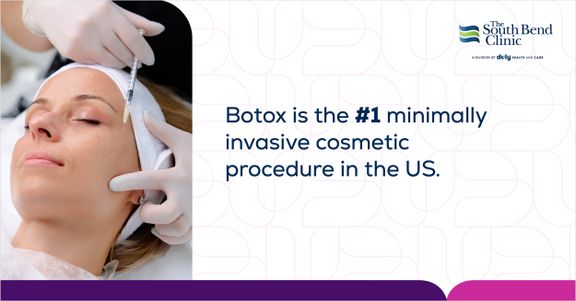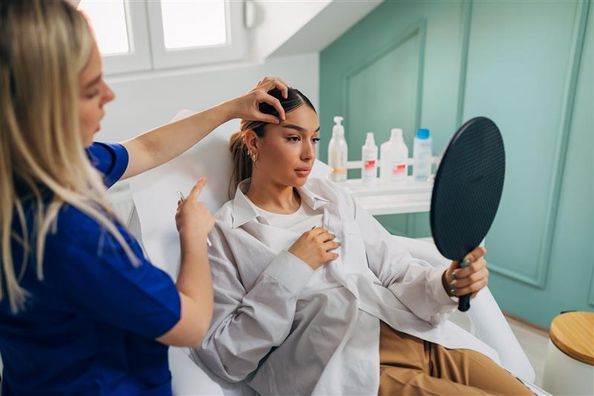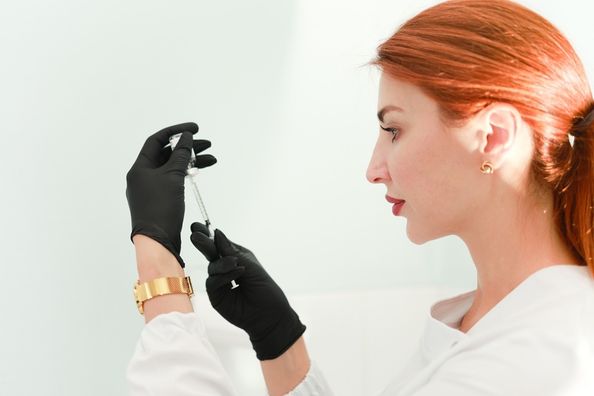If you’re thinking of getting BOTOX, make sure you’re doing so safely.
Pesky wrinkles on your forehead, lines around your mouth, sagging eyebrows – the signs of stress, aging, or simply your genetics are starting to catch up with you.
It can be frustrating when the face in the mirror doesn’t reflect the energy and youthfulness you feel inside. One solution you may be considering is botulinum type A injections – most commonly known as BOTOX® Cosmetic.

BOTOX injections are treatments that can temporarily make your face appear younger. They can treat severe forehead lines, frown lines, crow’s feet lines, and platysma bands (lines on the front of the neck).
In general, BOTOX injections are very safe – but only if they’re given correctly.
Here are five things you need to know about BOTOX safety:
1. The medication in BOTOX is safe.
BOTOX is among the most well-known brands of an injectable medication called botulinum toxin. It works its magic by blocking certain nerve signals to your muscles, stopping them from tensing up (contracting) and allowing them to relax.
While BOTOX is most commonly used to get rid of wrinkles or frown lines, it can also relieve symptoms of some health conditions, such as:
- Neck or muscle spasms
- Excessive sweating
- Upper or lower eyelid spasm
- Bladder problems
- Migraines
Try not to let the word “toxin” make you squirm. It’s true that large amounts of naturally occurring botulinum toxin in contaminated food or in a wound can make you sick. However, it’s very rare to get sick from a BOTOX injection. The type of botulinum toxin used in BOTOX is made in a lab where it’s sterilized, and there is only a small dose in each injection.
2. Licensed medical professionals are the only ones who should provide BOTOX.
There are many places that offer BOTOX, but it’s important to only get an injection from a licensed healthcare provider. In certain states (including Indiana), being a licensed medical professional is required to administer BOTOX.
Getting BOTOX from someone who isn’t licensed increases your risk of accidentally being given fake BOTOX. This is a counterfeit product that can cause serious effects, which may even be life-threatening. Licensed providers, on the other hand, can only purchase BOTOX from pharmaceutical supply chains. You can rest assured that they are only giving injections that meet medical control standards.
3. Where you get BOTOX performed is just as important as who you get it from.
Getting BOTOX in a healthcare setting like a physician’s office or med spa is much safer than getting it in a nonmedical day spa or at a “BOTOX party” (where people gather in a home or hotel to get BOTOX as a group event).
Healthcare settings typically have higher cleanliness and sanitation standards. There are also usually other professionals and lifesaving medical equipment on hand in case you have an allergic reaction and need additional care.
4. You need to make sure that you’re a good candidate for BOTOX.
Even though BOTOX is generally safe, it isn’t right for everyone. BOTOX isn’t recommended if you are pregnant or breastfeeding, since there isn’t enough research about whether or not it’s safe. It’s also not recommended if you:
- Have medical conditions like drooping eyelids, a swallowing disorder, or some types of neuromuscular disease
- Have weak facial muscles
- Take certain medications that could interact with BOTOX, such as hydroxyzine (Atarax and Vistaril) or tizanidine (Zanaflex®)
If you’re concerned about getting BOTOX, you can always check with your provider to make sure it’s right for you.
5. You don’t need to panic about BOTOX side effects.
There’s good news if you’re worried about side effects. Most people feel fine after getting an injection, and many go back to their daily lives right away. In fact, it’s often a “lunchtime” procedure that’s done in the middle of the day.
It is still possible to have some minor side effects, such as:
- Pain or redness where you were injected
- Mild headaches (which may be due to BOTOX initially causing some muscle spasms)
- Flu-like symptoms
- Eye irritation
- Upset stomach
These side effects are usually mild, get better on their own within a day or two, and aren’t a sign that something has gone wrong.
However, there are rare cases where side effects are severe or a sign that you need medical attention. Call your provider immediately if you experience these effects after receiving BOTOX:
- Signs of a urinary tract infection, like blood in your urine
- Vision problems, such as droopy eyelids or blurred vision
- Breathing problems
- Difficulty swallowing or talking
- Slurred speech
- Loss of bladder control
- Muscle weakness
- Severely upset stomach
- Numbness or paralysis (inability to move) in a part of your body that did not receive BOTOX
These effects may mean that the BOTOX has accidentally spread to another part of your body – and this can be serious. For example, if BOTOX causes difficulty swallowing, you may have an increased risk of choking or problems breathing. Fortunately, these types of problems are very rare.
At the end of the day, take a deep breath and rest assured that BOTOX is usually safe. As long as you take the right precautions, you can be just as relaxed as those BOTOX-ed muscles.
With our state-of-the-art equipment and fully licensed staff at South Bend Clinic Aesthetics & Spa, you can relax your muscles in a calming atmosphere under the care and direction of our board-certified, licensed clinicians. We will enhance your natural beauty, reduce the signs of aging, and give you the confidence you need to put your best face forward.
Health Topics:





